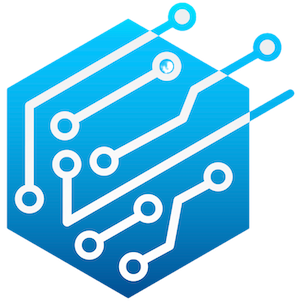The race for artificial intelligence supremacy has shifted from mere algorithmic finesse to robust infrastructure mastery. OpenAI’s recent strategic hires of industry veterans from Tesla, Meta, and xAI represent a decisive move to fortify the backbone of AI development. While flashy products like ChatGPT garner public admiration, the real engine driving progress lies beneath the surface—powerful data centers, cutting-edge hardware, and scalable software systems. By investing heavily in this unseen yet critical layer, OpenAI asserts that sustainable growth and safe progression towards artificial general intelligence (AGI) depend on resilient and innovative infrastructure.
This focus indicates a paradigm change: AI’s future will be dictated not solely by novel algorithms but by the capacity to efficiently deploy and scale them. These heavyweight engineers, such as David Lau and Uday Ruddarraju, bring experience managing colossal computational projects like Tesla’s Autopilot and Meta’s supercomputer infrastructure. Their expertise signals OpenAI’s commitment to creating a scalable ecosystem that can handle the increasing demands of advanced AI models—demand that is only expected to intensify as models grow bigger and more complex.
Leadership in the Infrastructure Arena: The Strategic Importance
OpenAI’s initiative to build Stargate, a dedicated infrastructure venture, exemplifies this strategic pivot. Stargate represents more than just a symbolic project; it embodies the future of AI research, where hardware and software converge to enable faster, safer, and more reliable training regimes. These improvements aren’t mere technical refinements; they are essential for achieving the ambitious goal of AGI. Without scalable, efficient infrastructure, innovation stalls, and progress becomes impractical or cost-prohibitive.
The hiring of experts who have orchestrated large-scale systems at companies like Tesla and Robinhood underscores the recognition that infrastructure is no longer ancillary but central to AI’s evolution. Such talent ensures that companies can push the boundaries of what’s technically feasible, whether it’s managing 200,000 GPUs for supercomputing or optimizing data pipelines for vast datasets. Their arrival signals an acknowledgment that the future of safe and effective AI hinges on the engineering equivalent of building a skyscraper—resilient, expansive, and adaptable.
Competitive Dynamics Fueling a Talent War
This strategic infrastructure focus, however, doesn’t exist in a vacuum. The landscape is fiercely competitive, characterized by aggressive recruitment wars, high-profile departures, and mounting resource investments. Meta’s Zuckerberg has notably targeted OpenAI’s talent pool, offering enticing compensation and access to immense computing resources to lure engineers away. Such moves reflect the high stakes involved; whoever masters the underlying mechanics of AI at scale gains a competitive advantage not only in technological prowess but also in market dominance.
OpenAI’s response—potentially recalibrating salaries and benefits—indicates an industry in flux. The competition is driving companies to reevaluate how they attract talent capable of managing the hardware ecosystems that will underpin future breakthroughs. The inclusion of former Tesla and Meta engineers suggests an understanding that these individuals bring not just technical expertise but also strategic foresight about managing complex, high-stakes infrastructure projects.
The Broader Implications: Power, Control, and Ethical Considerations
On a broader level, this emphasis on infrastructure also signifies the shifting power dynamics within the AI industry. As companies race to develop foundational models, control over data centers, hardware, and scaling capabilities becomes a form of leverage. These capabilities are not just technical assets; they are strategic assets capable of shaping the AI landscape’s future.
Moreover, the robust infrastructure needed for AGI presents ethical questions. Larger models and more powerful hardware increase the risk of misuse, biases, and unintended consequences. It’s imperative that these infrastructural advancements are coupled with rigorous safety and alignment measures, lest the race to build more powerful systems outpace our ethical safeguards. OpenAI’s focus on infrastructure hints at an acknowledgment of this challenge: building not only for power but for responsible development.
OpenAI’s concerted effort in bolstering its infrastructure team demonstrates a profound understanding that the future of AI isn’t solely about clever algorithms or user-facing products. It’s about creating a solid, scalable foundation that can support the next generation of AI—one that is safe, powerful, and accessible. As the industry heats up with competition and innovation, those who master the unseen engineering layers will inevitably shape the destiny of artificial intelligence.


Leave a Reply